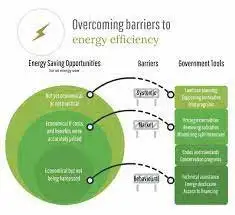U.S. coal plants major health threat, Ontario says
"Air pollution from U.S... power plants continues to harm the health, environment and economy of Ontario," Environment Minister Laurel Broten said in a statement, after she and Attorney General Michael Bryant filed comments on the proposed changes to the American federal agency.
It's the second time Ontario has formally criticized the new rules, which the EPA says are needed to make aging American power plants more efficient and "flexible".
The province filed comments last year, a few months after the changes were first proposed. The new filing, backed by 16 scientists, health officials and environmentalists, is a response to slight revisions announced in May, which the province says make no difference.
When the wind blows from the southwest, emissions from more than 600 plants in the U.S. Midwest – many with inadequate or no pollution scrubbers – blow across southern and central Ontario.
That cross-border pollution is responsible for at least half the smog and toxic air in Ontario, and as much as 90 per cent in Windsor and Sarnia. It causes an estimated 2,700 premature deaths and 12,000 hospital admissions here each year, the province says. It also harms forests, farm crops, water quality and buildings. The damage totals nearly $10 billion – including $6.6 billion in health bills, Queen's Park says.
The Liberal government has pledged to close Ontario's four remaining coal-fuelled plants by the end of 2014. But, it says, that move wouldn't have much impact if huge amounts of sulphur dioxide, nitrous oxide, ozone, mercury, fine particles and other harmful pollutants continue to cross the border.
This year, 33 days of smog advisories have already been declared in Ontario, second only to the 53 recorded for all of 2005.
The current regulations, in force since the U.S. Clean Air Act took effect more than 30 years ago, require scrubbers to be installed when power plants are upgraded or expanded. The devices cut emissions by up to 98 per cent. Under the new rules, they often wouldn't be required, and the plants could operate for longer hours and pollute more each year, the province says.
"We continue to believe that the changes EPA is proposing will ease an important enforcement mechanism to reducing air pollution in our common airshed," Ontario's comment states.
Along with Ontario, 14 states have formally criticized the proposals, and two U.S. courts have made rulings that appear to oppose it.
Related News

Solar Now ‘cheaper Than Grid Electricity’ In Every Chinese City, Study Finds
BEIJING - Solar power has become cheaper than grid electricity across China, a development that could boost the prospects of industrial and commercial solar, according to a new study.
Projects in every city analysed by the researchers could be built today without subsidy, at lower prices than those supplied by the grid, and around a fifth could also compete with the nation’s coal electricity prices.
They say grid parity – the “tipping point” at which solar generation costs the same as electricity from the grid – represents a key stage in the expansion of renewable energy sources.
While previous studies of nations such…





